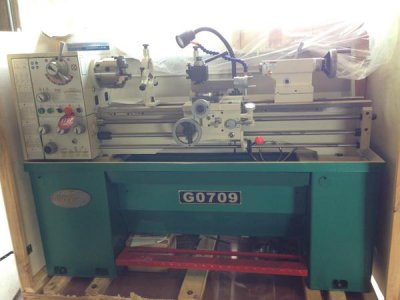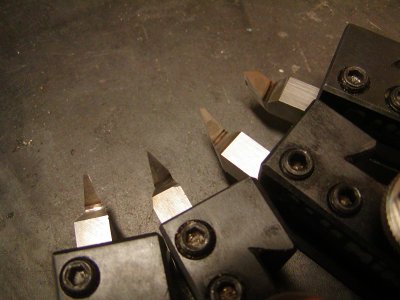- Joined
- Jan 27, 2014
- Messages
- 24
I finally took the plunge and bought my first lathe!
My main reason for making this purchase is to true actions, and barrel/chamber my own rifles. Hopefully I'll become proficient enough to start doing work for others as well. I have a good understanding of how the machine works and how to run it, but have very little experience actually running a lathe so this will be a big learning experience.

I have been picking up indicators and measuring tools here and there and I think I have most of what I'll need in that department. I haven't bought a single cutting tool yet as I just don't know what to get lol.
I'm wondering if some of you could offer advice as to what to get? I know I'll learn a lot from grinding HSS blanks and have some to play with but I want indexable tooling. I'm told that the Arthur Warner high speed insert tooling is great for beginners and provides a nice finish at lower speeds, if you suggest this what kits should I pick up to enable me to turn to diameter, thread, crown, and counterbore barrels?
http://www.arwarnerco.com/c-5-tool-kits.aspx
I'm looking at kit 18 (1/2" threader) but am unsure as to where to go from there? A quick description as to what tool does what job or a link to some resources on the subject would be great.
thanks for any advice!
Steve
My main reason for making this purchase is to true actions, and barrel/chamber my own rifles. Hopefully I'll become proficient enough to start doing work for others as well. I have a good understanding of how the machine works and how to run it, but have very little experience actually running a lathe so this will be a big learning experience.

I have been picking up indicators and measuring tools here and there and I think I have most of what I'll need in that department. I haven't bought a single cutting tool yet as I just don't know what to get lol.
I'm wondering if some of you could offer advice as to what to get? I know I'll learn a lot from grinding HSS blanks and have some to play with but I want indexable tooling. I'm told that the Arthur Warner high speed insert tooling is great for beginners and provides a nice finish at lower speeds, if you suggest this what kits should I pick up to enable me to turn to diameter, thread, crown, and counterbore barrels?
http://www.arwarnerco.com/c-5-tool-kits.aspx
I'm looking at kit 18 (1/2" threader) but am unsure as to where to go from there? A quick description as to what tool does what job or a link to some resources on the subject would be great.
thanks for any advice!
Steve


